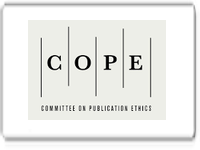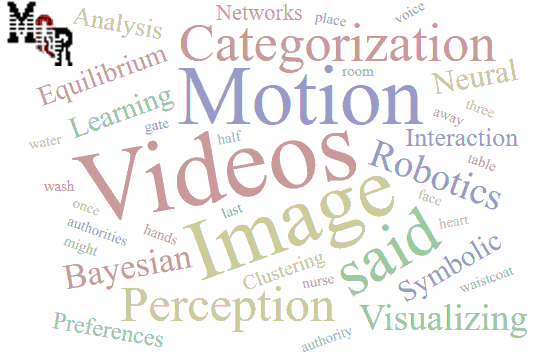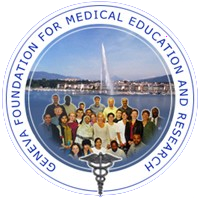Actualización en el diagnóstico, tratamiento y pronóstico de osteosíntesis imperfecta.
DOI:
https://doi.org/10.56048/MQR20225.7.2.2023.1638-1651Palabras clave:
Osteogénesis Imperfecta, Diagnóstico Genético, Bifosfonatos, Terapia Génica, Pronóstico.Resumen
La "enfermedad del ojo de cristal", científicamente llamada osteogénesis imperfecta, es un desorden genético que afecta la fabricación de colágeno en los huesos, llevando a una significativa susceptibilidad a fracturas y debilidad ósea. Aunque ha habido avances en el conocimiento de cómo se desarrolla la enfermedad, la variedad en sus manifestaciones clínicas y genéticas continúa siendo un obstáculo en la medicina. Esta revisión tiene como propósito brindar un análisis más exhaustivo y contemporáneo sobre cómo se diagnostica, las alternativas para su manejo y qué se puede esperar a largo plazo para las personas afectadas.
Se evidencio que el uso de la secuenciación genética, está permitiendo un diagnóstico más certero, además, el tratamiento ha evolucionado hacia un enfoque multidisciplinar que incluye fisioterapia, cirugía ortopédica y terapia farmacológica con bifosfonatos para aumentar la densidad ósea. El pronóstico de estos pacientes ha mejorado, aunque el nivel de vida puede verse perjudica, sobre todo en los casos más graves. Los recientes avances en el diagnóstico genético y las terapias a nivel molecular han cambiado por completo la forma de tratar, dando nuevas esperanzas a los pacientes. A pesar de estos avances, sigue existiendo una necesidad urgente de investigar y desarrollar terapias nuevas, más seguras y eficaces, con el propósito de aumentar el bienestar y las tasas de supervivencia de estos pacientes.
Descargas
Métricas
Cited
DOI: 10.56048![]()
Citas
Barnes, A. M., Cabral, W. A., Weis, M., & Makareeva, E. (2010). Absence of FKBP10 in recessive type XI osteogenesis imperfecta leads to diminished collagen cross-linking and reduced collagen deposition in extracellular matrix. Human Mutation, 31(12), E1589-E1598.
Bishop, N. (2010). Clinical management of children with osteogenesis imperfecta. The Journal of clinical endocrinology and metabolism, 95(2), 405-414.
Byers, P. H., & Pyott, S. M. (2012). Recessively inherited forms of osteogenesis imperfecta. Annual Review of Genomics and Human Genetics, 13, 109-127.
Chamberlain, J. R., Schwarze, U., Wang, P. R., Hirata, R. K., Hankenson, K. D., Pace, J. M., ... & Byers, P. H. (2014). Gene targeting in stem cells from individuals with osteogenesis imperfecta. Science, 303(5661), 1198-1201.
Cordero, A. R. F., & Almeida, L. N. A. (2019). Epidemiology of rare diseases in Ecuador. International Journal of Health Planning and Management, 34(2), 604-617.
Cordero, D., & Almeida, J. (2019). Rare diseases in Ecuador: Challenges and strategies for improvement. Public Health Reviews, 40(1), 1-12.
Folkestad, L., Hald, J. D., Canudas-Romo, V., Gram, J., Hermann, A. P., Langdahl, B., ... & Brixen, K. (2012). Mortality and causes of death in patients with osteogenesis imperfecta: a register-based nationwide cohort study. Journal of Bone and Mineral Research, 27(12), 2479-2485.
Folkestad, L., Hald, J. D., Canudas-Romo, V., Gram, J., Hermann, A. P., Langdahl, B., ... & Brixen, K. (2016). Mortality and Causes of Death in Patients With Osteogenesis Imperfecta: A Register-Based Nationwide Cohort Study. Journal of Bone and Mineral Research, 31(12), 2159-2166.
Forlino, A., & Marini, J. C. (2016). Osteogenesis imperfecta. The Lancet, 387(10028), 1657-1671.
Hill, C. L., Baird, W. O., & Walters, S. J. (2010). Quality of life in children and adolescents with Osteogenesis Imperfecta: a qualitative interview based study. Health and Quality of Life Outcomes, 8, 136.
Horwitz, E. M., Prockop, D. J., Fitzpatrick, L. A., Koo, W. W., Gordon, P. L., Neel, M., ... & Brenner, M. K. (2002). Transplantability and therapeutic effects of bone marrow-derived mesenchymal cells in children with osteogenesis imperfecta. Nature medicine, 5(3), 309-313.
Hoyer-Kuhn, H., Franklin, J., Allo, G., Kron, M., Netzer, C., Eysel, P., Schoenau, E., & Semler, O. (2016). Safety and efficacy of denosumab in children with osteogenesis imperfect—a first prospective trial. Journal of Musculoskeletal & Neuronal Interactions, 16(1), 24-32.
Marini, J. C., Forlino, A., Cabral, W. A., & Barnes, A. M. (2007). Consortium for osteogenesis imperfecta mutations in the helical domain of type I collagen: regions rich in lethal mutations align with collagen binding sites for integrins and proteoglycans. Human mutation, 28(3), 209-221.
Morello, R. (2018). Osteogenesis imperfecta and therapeutics. Matrix Biology, 71, 294-312.
Mortier, G. R., Cohn, D. H., Cormier-Daire, V., Hall, C., Krakow, D., Mundlos, S., ... & Unger, S. (2019). Nosology and classification of genetic skeletal disorders: 2019 revision. American Journal of Medical Genetics Part A, 179(12), 2393-2419.
Munns, C. F., Rauch, F., Travers, R., & Glorieux, F. H. (2004). Effects of intravenous pamidronate treatment in infants with osteogenesis imperfecta: Clinical and histomorphometric outcome. Journal of Bone and Mineral Research, 19(3), 420-426. doi:10.1359/JBMR.0301247
Orwoll, E. S., Shapiro, J., Veith, S., Wang, Y., Lapidus, J., Vanek, C., Reeder, J. L., Keaveny, T. M., Lee, D. C., Mullins, M. A., Nagamani, S. C. S., & Lee, B. (2017). Evaluation of teriparatide treatment in adults with osteogenesis imperfecta. Journal of Clinical Investigation, 127(2), 491-498. doi:10.1172/JCI83522
Rauch, F., & Glorieux, F. H. (2004). Osteogenesis imperfecta. The Lancet, 363(9418), 1377-1385. doi:10.1016/s0140-6736(04)16051-0
Rauch, F., Travers, R., Plotkin, H., & Glorieux, F. H. (2002). The effects of intravenous pamidronate on the bone tissue of children and adolescents with osteogenesis imperfecta. Journal of Clinical Investigation, 110(9), 1293-1299.
Sillence, D. O., Senn, A., & Danks, D. M. (1979). Genetic heterogeneity in osteogenesis imperfecta. Journal of medical genetics, 16(2), 101–116.
Simm, P. J., Johannesen, J., Briody, J., McQuade, M., Hsu, B., Bridge, C., ... & Munns, C. F. (2019). Zoledronic Acid Improves Bone Mineral Density, Reduces Bone Turnover and Improves Skeletal Strength in the Osteogenesis Imperfecta Mouse Model. Calcified Tissue International, 105(4), 443-454.
Stephens, K., Durst, A., & Swanson, J. (2017). Genetic testing for osteogenesis imperfecta. Current osteoporosis reports, 15(4), 1-9.
Takken, T., Terlingen, H. C., Helders, P. J., Pruijs, H., Van der Ent, C. K., & Engelbert, R. H. (2013). Cardiopulmonary fitness and muscle strength in patients with osteogenesis imperfecta type I. Journal of Pediatrics, 143(6), 833-838.
Tournis, S., & Dede, A. D. (2018). Osteogenesis imperfecta - A clinical update. Metabolism, 80, 27-37.
Trejo, P., & Rauch, F. (2016). Osteogenesis imperfecta in children and adolescents-new developments in diagnosis and treatment. Osteoporosis International, 27(12), 3427-3437.
Van Dijk, F. S., & Sillence, D. O. (2014). Osteogenesis imperfecta: clinical diagnosis, nomenclature and severity assessment. American journal of medical genetics. Part A, 164(6), 1470–1481.
Ward, L. M., Lalic, L., Roughley, P. J., & Glorieux, F. H. (2001). Thirty-three novel COL1A1 and COL1A2 mutations in patients with osteogenesis imperfecta types I-IV. Human Mutation, 17(6), 434. doi:10.1002/humu.1114
Widmann, R. F., Bitan, F. D., Laplaza, F. J., Burke, S. W., DiMaio, M. F., & Schneider, R. (1999). Spinal deformity, pulmonary compromise, and quality of life in osteogenesis imperfecta. Spine, 24(16), 1673.
Publicado
Cómo citar
Número
Sección
Licencia
Derechos de autor 2023 MQRInvestigar

Esta obra está bajo una licencia internacional Creative Commons Atribución 4.0.
Los autores se comprometen a respetar la información académica de otros autores, y a ceder los derechos de autor a la Revista MQRInvestigar, para que el artículo pueda ser editado, publicado y distribuido. El contenido de los artículos científicos y de las publicaciones que aparecen en la revista es responsabilidad exclusiva de sus autores. La distribución de los artículos publicados se realiza bajo una licencia 



































